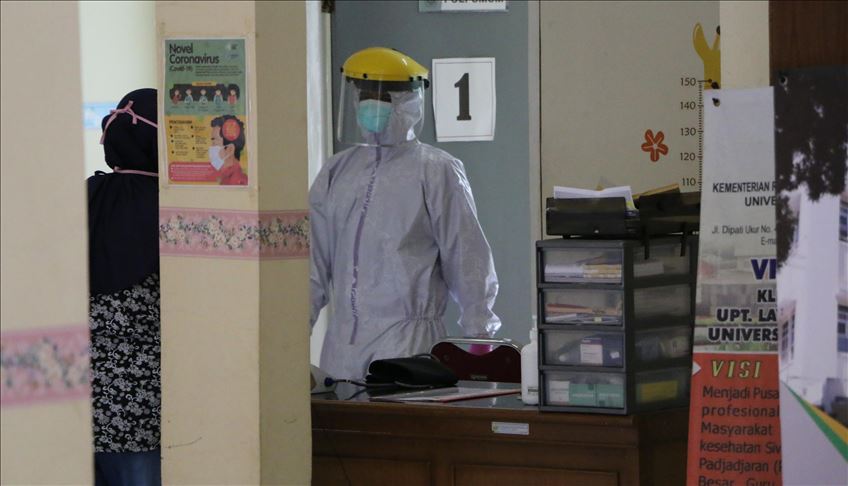Indonesia invents monitoring tool for COVID-19 patients
Country's research body develops device to track coronavirus patients, stem spread of virus

BANDUNG, Indonesia
Indonesia has invented an electronic detection tool to monitor people infected by COVID-19 and undergoing treatment or quarantine.
The Indonesian Institute of Sciences in mid-November launched Si-Monic (Smart Innovated Monitoring for COVID-19) to help authorities keep an eye on people suspected or tested positive for coronavirus.
Speaking to Anadolu Agency, Chief Researcher Galih Nugraha Nurkahfi said the device was connected to an information technology system to monitor infected patients under treatment.
"By wearing this bracelet, wherever you go, your position will be known," said Nurkahfi, adding that the watch-like device works after being connected via Bluetooth to user's smartphone.
Si-Monic to record movements
The Si-Monic mobile application, which is available and can be downloaded on Play Store, will record the user's movements.
Mochamad Mardi Marta Dinata, one of the researchers, said the device was installed with a Bluetooth Low Energy chip that has a unique identity and connects via internet to the server.
Dinata said observers from health department will receive movement information of the users and their latest status as well as notification when users disable the device or force it off their wrist.
"If you leave the house you will be known. If you are separated from your cellphone by 20 meters, there will be a notification in the observer's application," he told Anadolu Agency.
Disposable device
Emphasizing the single-use concept of Si-Monic, Budi Prawira, head of the research team, said the device is disposable and will be immediately broken when removed from wrist.
The concept is similar to the ankle monitor for people under house arrest as it will alert the supervising agency if the user enters a pre-determined excluded area.
"We equipped Si-Monic with a strong lithium battery for a minimum of 14 days, the duration of quarantine for COVID-19 patients," he said.
The development of the device started at the end of March using research funds from the COVID-19 Research and Innovation Consortium of the Ministry of Research and Technology.
Prawira said the research involved 15 researchers from four research agencies.
So far, he said, 23 Si-Monic prototypes have been produced using 3D printers and passed the laboratory and functional tests.
"It is electrically safe. Regarding monitoring, the tools and systems worked when they were used for two weeks by our institute staff," said Prawira on the functional test which took place in early September.
Noting that there are two companies ready to develop the device, he hoped the research can help authorities curb the spread of the deadly virus.
Since it is not categorized as a medical device, Prawira said he expects the production and licensing process to be not as complicated as the production of ventilator or rapid test tool.
"If it is mass-produced, of course, it will cost less than the prototype. We hope that it won't be more expensive than the price ceiling for rapid test set by the government," he added.
Country still in critical period
Meanwhile, Dicky Budiman, an Indonesian epidemiologist from Griffith University Australia, said that the newly invented device should have been made in the early period of pandemic.
However, he noted that it is never too late as the country is still in critical period, which is expected to last until next year.
"The device is important to help health workers monitor patients as part of tracing COVID-19 cases," he said, adding that tracing capacity in the country is currently inadequate as no one can confirm whether a suspect really complies with self-quarantine protocol or not.
Budiman also emphasized the importance of privacy policy for users and the potential of the device to be developed for other needs. "For example, to monitor children with special needs or people with Alzheimer's who may experience disorientation outside their home," he continued.
Budiman noted that the development of the system and further research needs to involve doctors or public health science practitioners and infectious disease experts who know well about the potential for future innovation.
"If the development is based on data, it can be an asset for improvement before further development," he added.
*Writing by Rhany Chairunissa Rufinaldo from Anadolu Agency's Indonesian language service in Jakarta
Anadolu Agency website contains only a portion of the news stories offered to subscribers in the AA News Broadcasting System (HAS), and in summarized form. Please contact us for subscription options.







